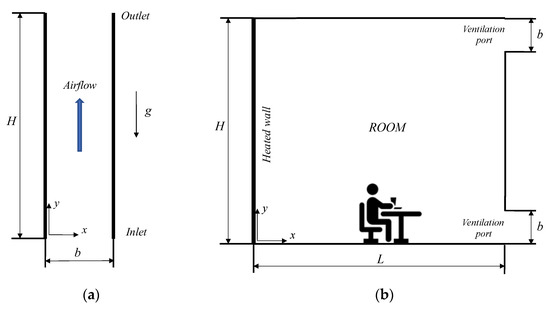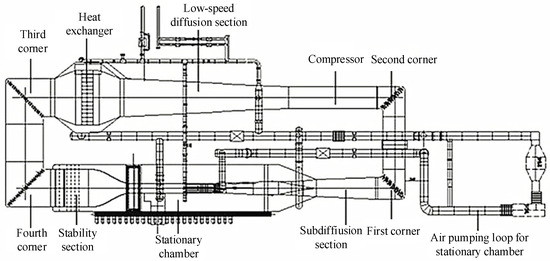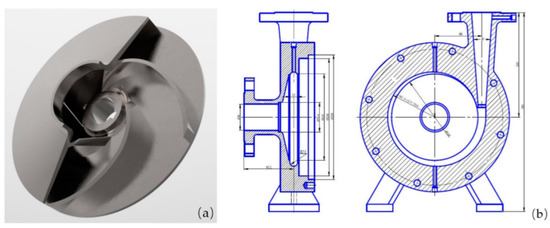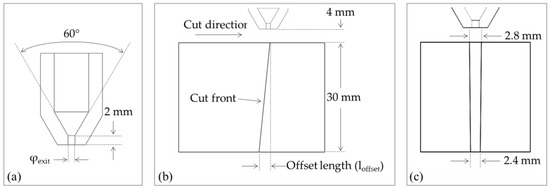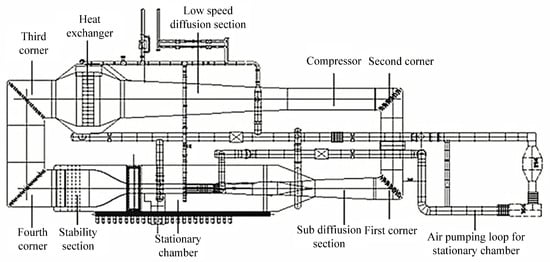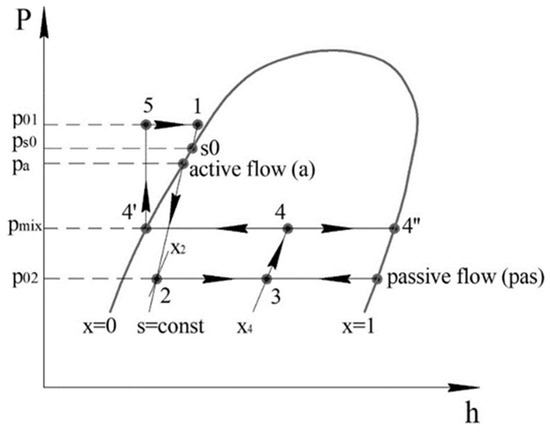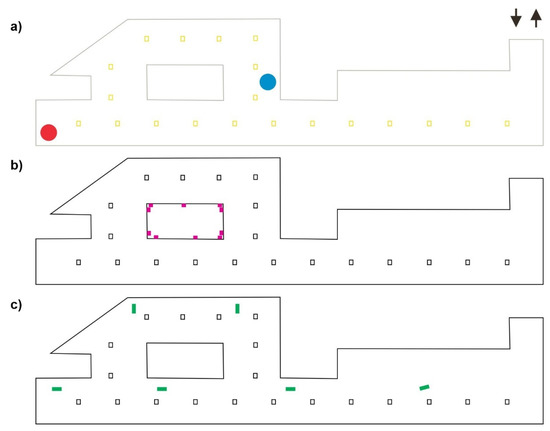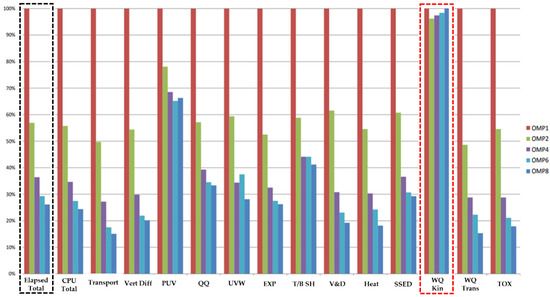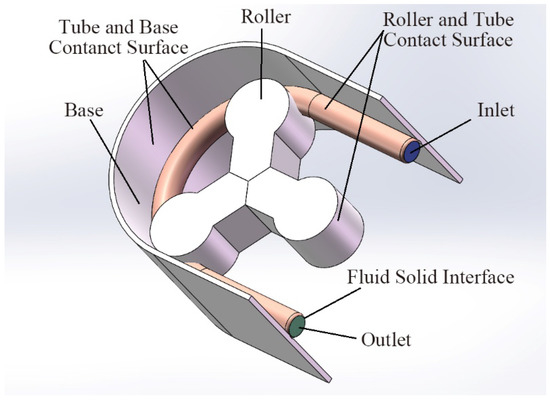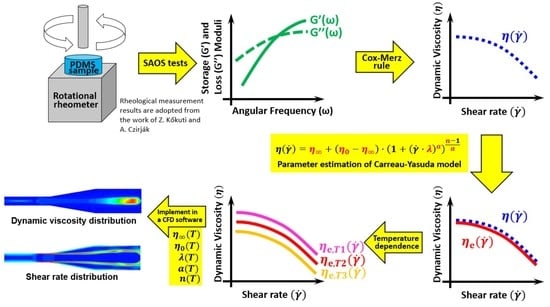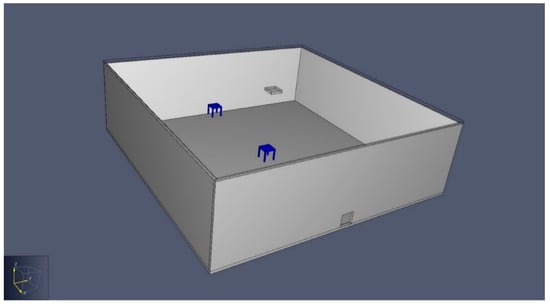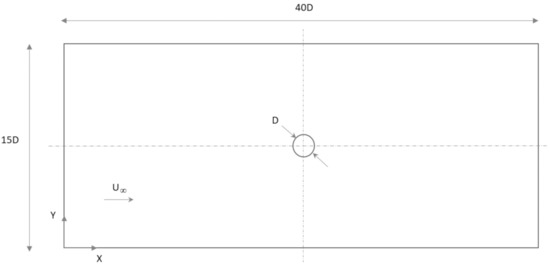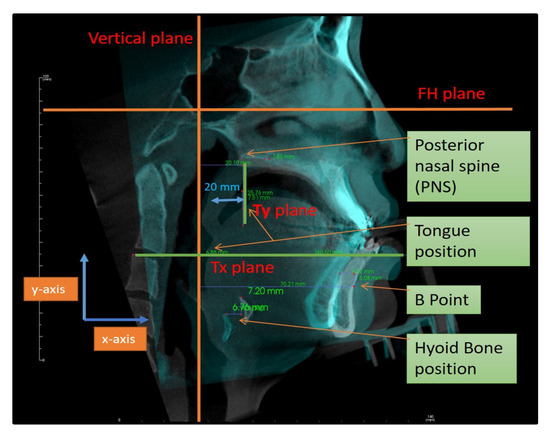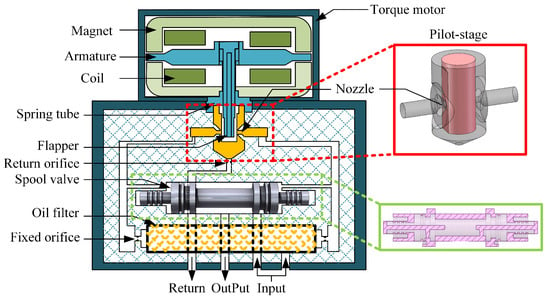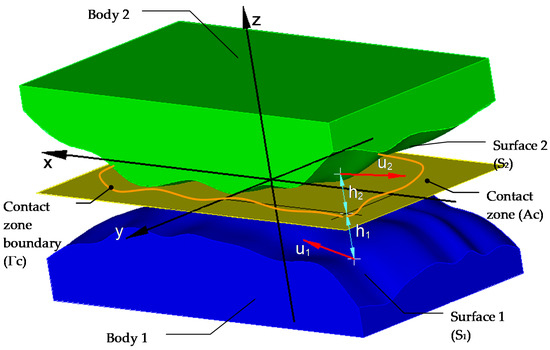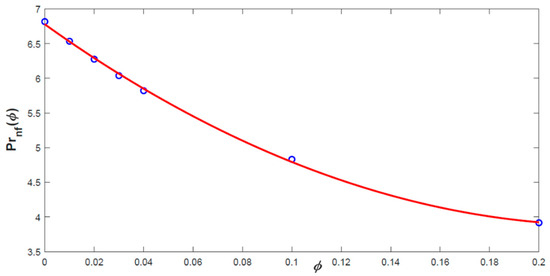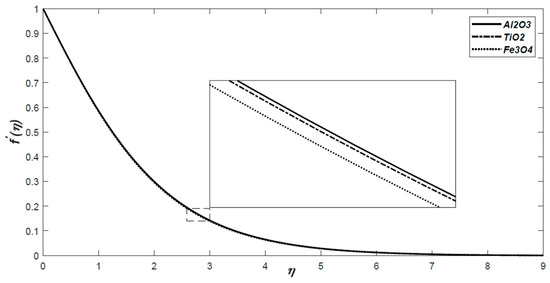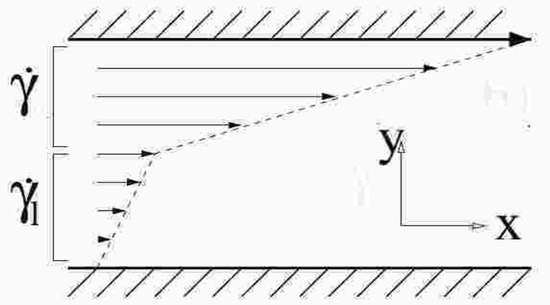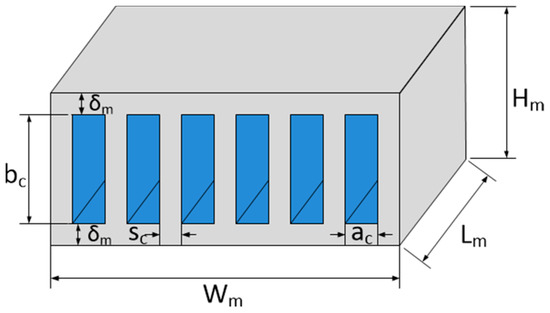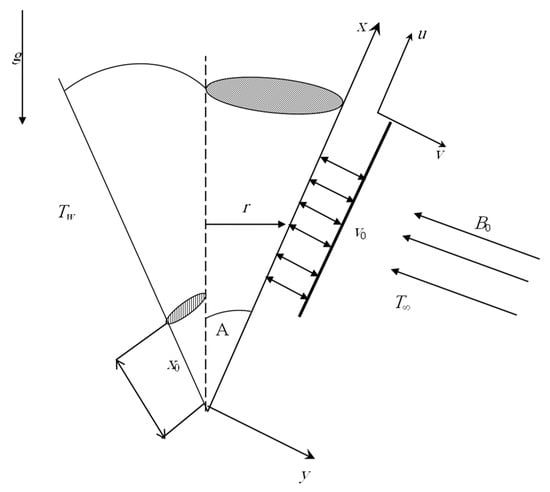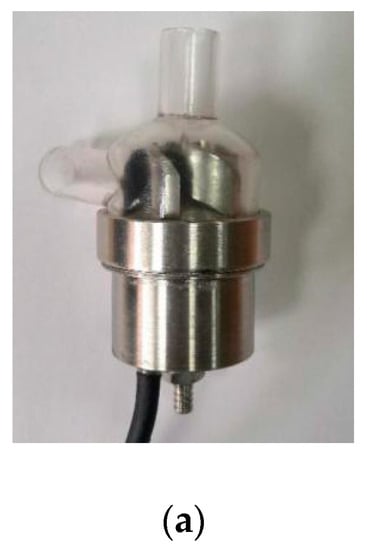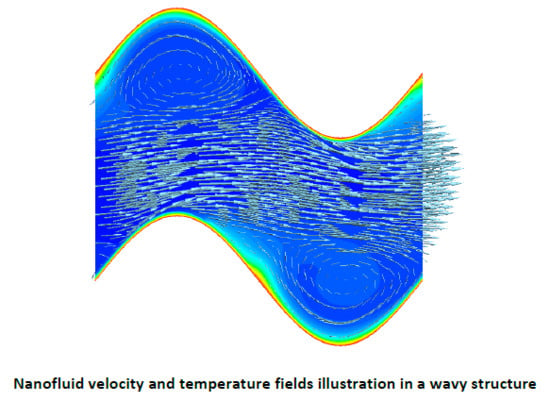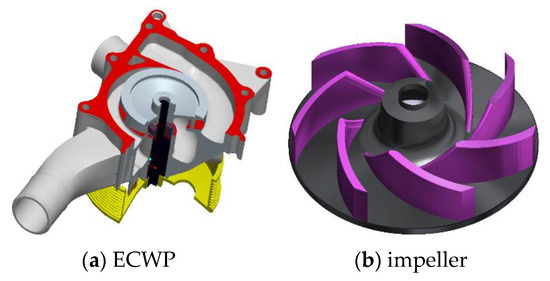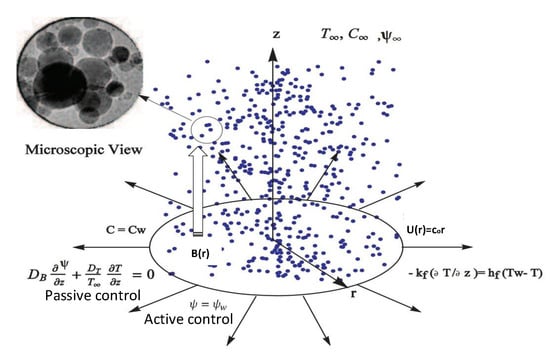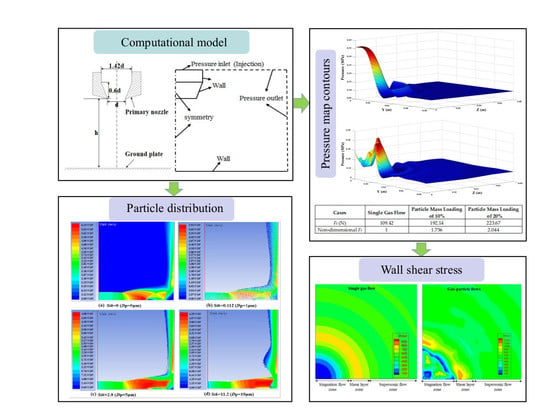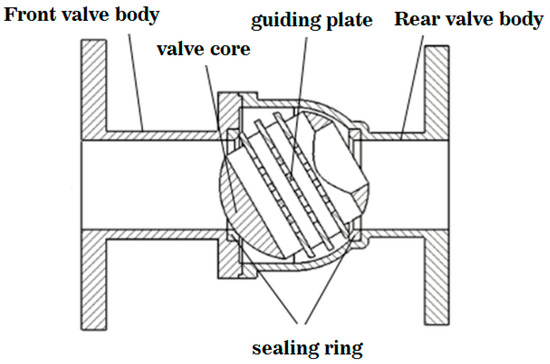Modeling, Simulation and Computation on Dynamics of Complex Fluids
Share This Topical Collection
Editors
 Prof. Dr. Gabriella Bognár
Prof. Dr. Gabriella Bognár
 Prof. Dr. Gabriella Bognár
Prof. Dr. Gabriella Bognár
E-Mail
Website
Guest Editor
Faculty of Mechanical Engineering and Informatics, Institute of Machine and Product Design, University of Miskolc (UM), 3515 Miskolc, Hungary
Interests: partial differential equations; boundary value problems; non-Newtonian fluid flows; tribology; surface pattern formation; numerical and analytic solutions
 Dr. Krisztian Hriczo
Dr. Krisztian Hriczo
 Dr. Krisztian Hriczo
Dr. Krisztian Hriczo
E-Mail
Website
Guest Editor
Faculty of Mechanical Engineering and Informatics, Institute of Machine and Product Design, University of Miskolc (UM), 3515 Miskolc, Hungary
Interests: differential equations of transport phenomena; non-Newtonian fluid flows; numerical and analytic solutions
Special Issues, Collections and Topics in MDPI journals
Topical Collection Information
Dear Colleagues,
Computational models of fluid flows with state-of-the-art knowledge in continuum concepts and associated fluid dynamics are fundamental to advancing the basic understanding and prediction of fluid dynamics. The field of application are diverse and range from, e.g., natural and industrial processes to biology, geology, and the problem areas involving heat and mass transfer, complex geometries, multiphase flows, chemical reactions, and non-Newtonian stress relations. There is a considerable interest in the modeling of fluids, such as polymer solutions, suspensions and emulsions. Particularly challenging is the identification of appropriate model systems that provide insight into the general principles of particle dynamics in complex fluids.
Effective numerical methods to physical models have to be developed in order to be able to perform direct numerical simulations that allow sufficiently accurate representations and insight in realistic flow conditions and geometries.
This Special Issue on “Modeling, Simulation, and Computation on Dynamics of Complex Fluids” aims to highlight new advances in the development and application of computational fluid modeling.
Prof. Dr. Gabriella Bognár
Dr. Krisztian Hriczo
Guest Editors
Manuscript Submission Information
Manuscripts should be submitted online at www.mdpi.com by registering and logging in to this website. Once you are registered, click here to go to the submission form. Manuscripts can be submitted until the deadline. All submissions that pass pre-check are peer-reviewed. Accepted papers will be published continuously in the journal (as soon as accepted) and will be listed together on the collection website. Research articles, review articles as well as short communications are invited. For planned papers, a title and short abstract (about 100 words) can be sent to the Editorial Office for announcement on this website.
Submitted manuscripts should not have been published previously, nor be under consideration for publication elsewhere (except conference proceedings papers). All manuscripts are thoroughly refereed through a single-blind peer-review process. A guide for authors and other relevant information for submission of manuscripts is available on the Instructions for Authors page. Processes is an international peer-reviewed open access monthly journal published by MDPI.
Please visit the Instructions for Authors page before submitting a manuscript.
The Article Processing Charge (APC) for publication in this open access journal is 2400 CHF (Swiss Francs).
Submitted papers should be well formatted and use good English. Authors may use MDPI's
English editing service prior to publication or during author revisions.
Keywords
- mathematical modelling
- fluid flows
- Newtonian fluids
- non-Newtonian fluids
- viscoelastic fluids
- numerical and analytic solutions
Published Papers (36 papers)
Open AccessArticle
Assessment of the Influences of Numerical Models on Aerodynamic Performances in Hypersonic Nonequilibrium Flows
by
Wenqing Zhang, Zhijun Zhang and Hualin Yang
Abstract
In this paper, the aerodynamic performances including shock wave standoff distance (SSD) and heat flux of ELECTRE vehicle at 53.3 km and 4230 m/s for several types of numerical models are investigated. The numerical models include thermal equilibrium/nonequilibrium (1T/2T) assumption, three surface boundary
[...] Read more.
In this paper, the aerodynamic performances including shock wave standoff distance (SSD) and heat flux of ELECTRE vehicle at 53.3 km and 4230 m/s for several types of numerical models are investigated. The numerical models include thermal equilibrium/nonequilibrium (1T/2T) assumption, three surface boundary conditions (no-slip/non-catalytic, slip/non-catalytic, slip/fully-catalytic), four chemical kinetic models (DK, Park, Gupta, and No Reaction (NR)) and two controlling temperatures (
Ttr0.7Tve0.3,
Ttr0.5Tve0.5). The results show that the chemical kinetic model significantly affects the SSD, and its value gradually decreases with the increase in chemical reaction rate. The SSD predicted by the NR model is 20.7% larger than that of the Park model. The SSD is also affected by the proportion of vibro-electronic temperature (
Tve) in the controlling temperature, and the higher the proportion, the larger the SSD. Regarding the heat flux, the catalytic surface setting is crucial, where the value predicted by the fully-catalytic model is 62.2% higher than that by the non-catalytic model. As the chemical reaction rate of Gupta, DK, and Park models increases sequentially, the calculated heat flux decreases in turn. The heat flux predicted by the 2T model is lower than that by the 1T model, and the higher
Tve proportion in the controlling temperature, the smaller the heat flux. The fundamental reason is that the trans-rotational convective heat flux of the 2T model is much lower than that of the 1T model, and the trans-rotational convective heat flux decreases with an increase in the
Tve proportion.
Full article
►▼
Show Figures
Open AccessArticle
Experimental and CFD Analysis of Hydrodynamics in Dual-Impeller Crystallizer at Different Off-Bottom Clearances
by
Antonija Čelan, Marija Ćosić, Željko Penga and Nenad Kuzmanić
Viewed by 647
Abstract
Producing tailor-made crystals demands knowledge of the influence of hydrodynamics and nucleation kinetics. In this paper, the hydrodynamic conditions in a dual-impeller crystallizer and their influence on the key nucleation parameters of the batch cooling crystallization of borax at different impeller off-bottom clearances
[...] Read more.
Producing tailor-made crystals demands knowledge of the influence of hydrodynamics and nucleation kinetics. In this paper, the hydrodynamic conditions in a dual-impeller crystallizer and their influence on the key nucleation parameters of the batch cooling crystallization of borax at different impeller off-bottom clearances were investigated. Two different impeller configurations were used—a dual pitched-blade turbine (2 PBT) and a dual straight-blade turbine (2 SBT). Hydrodynamics was analyzed in depth based on the developed computational fluid dynamics model. The experimental results on mixing time and power input were used to validate the numerical model. The results show that the properties of the final product are affected by the impeller position in both dual-impeller configurations. An increase in the impeller off-bottom clearance in both systems results in a decrease in the mean crystal size. The hydrodynamic conditions generated at
C/
D = 1 in the 2 PBT impeller system and at
C/
D = 0.6 in the 2 SBT impeller system favored an earlier onset of nucleation compared to other impeller positions. It was found that the eddy dissipation rate and the Kolmogorov length scale correlate highly with the mean crystal size, suggesting that the size is affected by the shear stress in the vessel, rather than the overall convective flow.
Full article
►▼
Show Figures
Open AccessFeature PaperArticle
Analysis of Water Flow through the Active Parts of an Abrasive Water Jet Machine: A Combined Analytical and CFD Approach
by
Iulian Pătîrnac, Razvan George Ripeanu, Catalin Popescu and Maria Tănase
Cited by 1 | Viewed by 689
Abstract
This study has the main objective of the analysis of water flow through the active parts (cutting head CH) of an abrasive water jet (AWJ) machine, model YCWJ-380-1520, performed on a high-pressure nozzle (HPN) and mixing tube (MT). The flow is analyzed through
[...] Read more.
This study has the main objective of the analysis of water flow through the active parts (cutting head CH) of an abrasive water jet (AWJ) machine, model YCWJ-380-1520, performed on a high-pressure nozzle (HPN) and mixing tube (MT). The flow is analyzed through the ruby orifice with a diameter of 0.25 mm by assimilating it with a circular pipe. Taking into account the fact that the average flow velocity through the ruby orifice is about 622 m/s, the value of 155,500 according to the Reynolds criterion was obtained. Regarding the turbulent flow regime, the flow section is divided into four zones; for each of them, the limits of flow layers and the maximum values of water velocities were determined. In the second part of this work, a 2D analysis of the flow through the CH assembly was carried out. Since the abrasive inlet tube (AT) also appears in the CH componence, two situations were analyzed in this study, namely, the case when the inlet through AT is restricted and the case when the AT is free. For each case, three values of flow diameters were considered, both for HPN and MT. The water flow characteristics were established and comparisons between theoretical models and CFD simulation were performed.
Full article
►▼
Show Figures
Open AccessReview
A Review on Solar Chimneys: From Natural Convection Fundamentals to Thermohydraulic Best-Performance Proposals
by
Blas Zamora
Cited by 2 | Viewed by 3340
Abstract
This work presents an overview of (passive) solar chimney research, from the natural convection fundamentals to the recent progress for achieving thermohydraulic best-performance. Solar chimneys are attractive because they contribute to increasing the efficiency in air conditioning processes for dwellings and buildings, and
[...] Read more.
This work presents an overview of (passive) solar chimney research, from the natural convection fundamentals to the recent progress for achieving thermohydraulic best-performance. Solar chimneys are attractive because they contribute to increasing the efficiency in air conditioning processes for dwellings and buildings, and therefore also aid to reduction in greenhouse gas emissions. A wide number of works dealing with solar chimneys (and Trombe walls or similar) shape designs, as well as with the inclusion of obstacles for disturbing the airflow, is commented in detail. Several numerical simulation procedures used in the literature are specially discussed, and different recommendations are pointed out to be considered for the appropriate numerical simulation of the operating modes of a solar chimney. Investigations aiming for the best performance conditions (for both thermal, and dynamic or ventilation modes) deserve special attention.
Full article
►▼
Show Figures
Open AccessArticle
Multimode Wind Tunnel Flow Field System Monitoring Based on KPLS
by
Jin Guo, Ran Zhang, Xiaochun Cui, Weitong Ma and Luping Zhao
Cited by 1 | Viewed by 1325
Abstract
In a wind tunnel process, Mach number is the most important parameter. However, it is difficult to measure directly, especially in the multimode operation process, leading to difficulty in process monitoring. Thus, it is necessary to measure the Mach number indirectly by utilizing
[...] Read more.
In a wind tunnel process, Mach number is the most important parameter. However, it is difficult to measure directly, especially in the multimode operation process, leading to difficulty in process monitoring. Thus, it is necessary to measure the Mach number indirectly by utilizing data-driven methods, and based on which, to monitor the operation status of the wind tunnel process. In this paper, therefore, a multimode wind tunnel flow field system monitoring strategy is proposed. Since the wind tunnel system is a strongly nonlinear system, the kernel partial least squares method, which can efficiently handle the nonlinear regression problem, is utilized. Firstly, the Mach number is predicted utilizing the kernel partial least squares method. Secondly, process monitoring statistics, i.e., the Hotelling
T2 statistic and the square prediction error, the
SPE statistic, and their control limits, are proposed to be applied to monitor the wind tunnel process on the basis of the prediction of the Mach number. Finally, the Mach number prediction and monitoring strategy are applied to a real process, where mode analysis and division is necessary. After mode division, the single-mode and multimode processes are modeled and predicted, respectively, and both the single-mode and multimode processes are monitored online. Satisfactory results were achieved compared with those of the partial least squares method.
Full article
►▼
Show Figures
Open AccessArticle
Effect on Starting Modes on Centrifugal Pump Performance
by
Liang Cheng, Kai-Yuan Zhang, Yu-Liang Zhang and Xiao-Qi Jia
Cited by 2 | Viewed by 1756
Abstract
In this paper, a small centrifugal pump experiment was conducted under conditions of power frequency startup and frequency conversion startup respectively. The evolutionary trends for hydraulic performance parameters with time were obtained, and the transient properties of the two starting modes were revealed
[...] Read more.
In this paper, a small centrifugal pump experiment was conducted under conditions of power frequency startup and frequency conversion startup respectively. The evolutionary trends for hydraulic performance parameters with time were obtained, and the transient properties of the two starting modes were revealed with the help of three dimensionless coefficients. This study revealed the similarities and differences between the two starting modes. In both starting modes, the increase of the valve opening caused a time lag for the flow to reach a steady state. Compared with the power frequency startup mode, the frequency conversion startup mode had weaker shaft power shocks and was safer in practice. The dimensionless flow curves maintained a good evolutionary agreement with the corresponding flow curves. The dimensionless shaft power was extremely high at the beginning of startup and then decreased to a stable value.
Full article
►▼
Show Figures
Open AccessArticle
Genetic Algorithm-Based Mach Number Control of Multi-Mode Wind Tunnel Flow Fields
by
Wenshan Yu, Beichen Su, Zhengzhou Rao, Hengxin Pan and Luping Zhao
Cited by 2 | Viewed by 1499
Abstract
There are unfavorable conditions such as constantly changing working conditions and frequent disturbances that affect Mach number control in wind tunnel flow fields. As the proportional, integral and differential (PID) parameters need to be re-tuned for each working conditions of a wind tunnel,
[...] Read more.
There are unfavorable conditions such as constantly changing working conditions and frequent disturbances that affect Mach number control in wind tunnel flow fields. As the proportional, integral and differential (PID) parameters need to be re-tuned for each working conditions of a wind tunnel, the operational costs of wind tunnels are very high. Therefore, to lower these costs, a genetic algorithm was utilized to tune the PID parameters to achieve Mach number control of a multi-mode wind tunnel flow field. In this paper, firstly, models for the multi-mode wind tunnel were established; secondly, a PID control system was designed based on the genetic algorithm and the control effects of the proposed PID control system were verified by simulations and were compared with the effects of a PSO tuning PID control system.
Full article
►▼
Show Figures
Open AccessEditor’s ChoiceArticle
Analysis of Gas Flow Dynamics in Thermal Cut Kerf Using a Numerical and Experimental Approach for Nozzle Selection
by
Upendra Tuladhar, Sang-Hyun Ahn, Dae-Won Cho, Dae-Hwan Kim, Seokyoung Ahn, Seonmin Kim, Seung-Hoon Bae and Tae-Kook Park
Cited by 5 | Viewed by 1918
Abstract
Consistency in gas flow behavior under various operating conditions is expected for uniform cutting performance in the thermal cutting process. The slope of the cut front in the kerf slot of a sample cutting material varies with the operating condition which affects the
[...] Read more.
Consistency in gas flow behavior under various operating conditions is expected for uniform cutting performance in the thermal cutting process. The slope of the cut front in the kerf slot of a sample cutting material varies with the operating condition which affects the gas flow pattern. Therefore, how the nozzle exit diameter and the slope of the cut front effects gas flow behavior has been studied using the Reynolds averaged Navier–Stokes (RANS) based
k–
ω turbulence model. Convergent–straight-type nozzles with exit diameters φ
exit of 1.5 mm, 2 mm and 2.5 mm were used to study the flow patterns through the kerf slots of variable cut front slopes. The numerical simulation results were then compared with the results obtained from the Schlieren experiments. In addition, image processing was performed in the Schlieren images for clear visualization and precise comparison of the numerical and experimental data. The results confirm that a nozzle with an exit diameter of 2 mm shows a higher consistency in flow behavior in variable operating conditions.
Full article
►▼
Show Figures
Open AccessArticle
KPLS-Based Mach Number Prediction for Multi-Mode Wind Tunnel Flow System
by
Ping Yuan and Luping Zhao
Cited by 3 | Viewed by 1415
Abstract
In wind tunnels, the Mach number needs to be precisely monitored and controlled. It is difficult to obtain the Mach number directly online, especially when the wind tunnel system is operating in multiple modes. To deal with this problem, a Mach number prediction
[...] Read more.
In wind tunnels, the Mach number needs to be precisely monitored and controlled. It is difficult to obtain the Mach number directly online, especially when the wind tunnel system is operating in multiple modes. To deal with this problem, a Mach number prediction algorithm based on the kernel partial least squares method is proposed for multi-mode wind tunnel systems. First, in order to reflect real-time changes, the time-slice partial least squares regression method is adopted. Then, in order to enable the model to represent information about the whole working mode divided by key process variables, the mean-value partial least squares model is established and is compared with the time-slice model. Then, considering that wind tunnel systems exhibit strong nonlinear characteristics, the kernel partial least squares method, which is suitable for nonlinear systems, is used to predict the Mach number. The results show that the mean-value model is better than the time-slice model, the models for single modes show better prediction abilities than those for multiple modes, and the kernel partial least square method is more suitable for wind tunnel systems than the partial least square method.
Full article
►▼
Show Figures
Open AccessArticle
Flow Modeling in a Vortex Chamber of a Liquid–Steam Jet Apparatus
by
Iurii Merzliakov, Ivan Pavlenko, Marek Ochowiak, Vitalii Ivanov and Praveen Agarwal
Cited by 3 | Viewed by 2064
Abstract
The article investigated the flow of boiling streams through a nozzle with an oblique cut. Due to this flow organization, deviation from the nozzle axis at the vortex chamber inlet occurred. The study of flow modeling in the inlet section was carried out.
[...] Read more.
The article investigated the flow of boiling streams through a nozzle with an oblique cut. Due to this flow organization, deviation from the nozzle axis at the vortex chamber inlet occurred. The study of flow modeling in the inlet section was carried out. The flow design and the calculation scheme of the vortex liquid–steam jet apparatus were proposed. Analytical expressions between the main operating parameters were obtained according to the developed mathematical model. A recommended oblique-cut angle for the active-flow nozzle was evaluated considering the transition through the first critical section based on the tangential velocity flow model. Validation of the mathematical model in the inlet section of the vortex chamber was provided based on the comparison with available experimental data. Flow visualization in the inlet section of the vortex chamber was obtained. The assumption of uneven flow distribution was confirmed experimentally. Overall, the boiling liquid flow was implemented in the active flow nozzle. The obtained scientific and practical results help to determine geometric parameters and physical characteristics of the vortex-type liquid–steam jet apparatus at the design stage. The obtained results were implemented to modernize vacuum units based on vortex type liquid–steam jet apparatuses.
Full article
►▼
Show Figures
Open AccessFeature PaperArticle
Numerical Description of Jet and Duct Ventilation in Underground Garage after LPG Dispersion
by
Zdzislaw Salamonowicz, Malgorzata Majder-Lopatka, Anna Dmochowska, Aleksandra Piechota-Polanczyk and Andrzej Polanczyk
Cited by 3 | Viewed by 2264
Abstract
Contamination of toxic and odorous gases emitted from stacks in buildings located in an urban environment are potential health hazards to citizens. A simulation using the computational fluid dynamic technique may provide detailed data on the flammable region and spatial dispersion of released
[...] Read more.
Contamination of toxic and odorous gases emitted from stacks in buildings located in an urban environment are potential health hazards to citizens. A simulation using the computational fluid dynamic technique may provide detailed data on the flammable region and spatial dispersion of released gases. Concentrations or emissions associated with garage sources and garage-to-house migration rates are needed to estimate potential exposures and risk levels. Therefore, the aim of the study was to use an original mathematical model to predict the most accurate locations for LPG sensors in an underground garage for vehicles powered with LPG. First, the three-dimensional geometry of an underground garage under a multi-family building was reconstructed. Next, two types of ventilation, jet and duct, were considered, and different sources of LPG leakage were assumed. Then, the Ansys Fluent software was applied as a solver, and the same initial value of released LPG (5 kg) was assumed. As a simplification, and to avoid the simulation of choked outflow, the emission from a large area was adopted. The results showed stagnation areas for duct ventilation in which gas remained for both the jet and duct ventilation. Moreover, it was observed that the analyzed gas would gather in the depressions of the ground in the underground garage, for example in drain grates, which may create a hazardous zone for the users of the facility. Additionally, it was observed that for jet ventilation, turbulence appearance sometimes generated differentiated gas in an undesirable direction. The simulation also showed that for blowing ventilation around the garage, and for higher LPG leakage, a higher cloud of gas that increased probability of ignition and LPG explosion was formed. Meanwhile, for jet ventilation, a very low concentration of LPG in the garage was noticed. After 35 s, LPG concentration was lower than the upper explosive limit. Therefore, during the LPG leakage in an underground garage, jet ventilation was more efficient in decreasing LPG gas to the non-explosive values.
Full article
►▼
Show Figures
Open AccessFeature PaperArticle
Parallelization of a 3-Dimensional Hydrodynamics Model Using a Hybrid Method with MPI and OpenMP
by
Jung Min Ahn, Hongtae Kim, Jae Gab Cho, Taegu Kang, Yong-seok Kim and Jungwook Kim
Cited by 7 | Viewed by 2203
Abstract
Process-based numerical models developed to perform hydraulic/hydrologic/water quality analysis of watersheds and rivers have become highly sophisticated, with a corresponding increase in their computation time. However, for incidents such as water pollution, rapid analysis and decision-making are critical. This paper proposes an optimized
[...] Read more.
Process-based numerical models developed to perform hydraulic/hydrologic/water quality analysis of watersheds and rivers have become highly sophisticated, with a corresponding increase in their computation time. However, for incidents such as water pollution, rapid analysis and decision-making are critical. This paper proposes an optimized parallelization scheme to reduce the computation time of the Environmental Fluid Dynamics Code-National Institute of Environmental Research (EFDC-NIER) model, which has been continuously developed for water pollution or algal bloom prediction in rivers. An existing source code and a parallel computational code with open multi-processing (OpenMP) and a message passing interface (MPI) were optimized, and their computation times compared. Subsequently, the simulation results for the existing EFDC model and the model with the parallel computation code were compared. Furthermore, the optimal parallel combination for hybrid parallel computation was evaluated by comparing the simulation time based on the number of cores and threads. When code parallelization was applied, the performance improved by a factor of approximately five compared to the existing source code. Thus, if the parallel computational source code applied in this study is used, urgent decision-making will be easier for events such as water pollution incidents.
Full article
►▼
Show Figures
Open AccessArticle
Experimental and Numerical Simulation Study of Pressure Pulsations during Hose Pump Operation
by
Wendong Wang, Lixin Zhang, Xiao Ma, Zhizheng Hu and Yongchun Yan
Cited by 6 | Viewed by 3324
Abstract
An adventitious flow field has a great impact on the operational reliability of pumps; therefore, it is important to study pump flow characteristics to reduce the noise, vibration, and cavitation performance of pumps. To study the pressure fluctuation characteristics of the hose pump,
[...] Read more.
An adventitious flow field has a great impact on the operational reliability of pumps; therefore, it is important to study pump flow characteristics to reduce the noise, vibration, and cavitation performance of pumps. To study the pressure fluctuation characteristics of the hose pump, a three-dimensional two-way fluid structure coupling model of the hose pump was established. The transient structural module, fluid flow (fluent) module, and system coupling module of ANSYS Workbench 19.0 were used to simulate the unsteady multiple working conditions of the hose pump. The accuracy and reliability of the calculation results from the fluid solid coupling simulation were verified via experimentation. The results show that the roller pass frequency is the main frequency of the pressure fluctuation at the outlet of the hose pump. When the plane of the deformation recovery area is small, the pressure pulsation amplitude is large, and the outlet pressure and speed are large. Due to the irregular backflow of the fluid, stall zones of different sizes form, the outlet pressure is closer to a sinusoid when there is no pressure. The higher the rotating speed is, the faster the pressure roller leaving the hose, the higher the pressure pulsation, and the larger the stall zone. Therefore, the best way to reduce the pressure pulsation in the pump is to optimize the geometry of the pressure roller and change the outlet angle of the hose.
Full article
►▼
Show Figures
Open AccessArticle
Temperature-Dependent Viscosity Model for Silicone Oil and Its Application in Viscous Dampers
by
Márk Venczel, Gabriella Bognár and Árpád Veress
Cited by 18 | Viewed by 9177
Abstract
Silicone fluids belong to the group of pseudoplastic non-Newtonian fluids with complex rheological characteristics. They are considered in basic and applied researches and in a wide range of industrial applications due to their favorable physical and thermal properties. One of their specific field
[...] Read more.
Silicone fluids belong to the group of pseudoplastic non-Newtonian fluids with complex rheological characteristics. They are considered in basic and applied researches and in a wide range of industrial applications due to their favorable physical and thermal properties. One of their specific field of applications in the automotive industry is the working fluid of viscous torsional vibration dampers. For numerical studies in the design and development phase of this damping product, it is essential to have thorough rheological knowledge and mathematical description about the silicone oil viscosity. In the present work, adopted rheological measurement results conducted on polydimethylsiloxane manufactured by Wacker Chemie with initial viscosity of 1000 Pas (AK 1 000 000 STAB silicone oil) are processed. As a result of the parameter identification by nonlinear regression, the temperature-dependent parameter curves of the Carreau–Yasuda non-Newtonian viscosity model are generated. By implementing these parameter sets into a Computational Fluid Dynamics (CFD) software, a temperature- and shear-rate-dependent viscosity model of silicone fluid was tested, using transient flow and thermal simulations on elementary tube geometries in the size range of a real viscous torsional vibration damper’s flow channels and filling chambers. The numerical results of the finite volume method provide information about the developed flow processes, with especial care for the resulted flow pattern, shear rate, viscosity and timing.
Full article
►▼
Show Figures
Open AccessArticle
Numerical Reconstruction of Hazardous Zones after the Release of Flammable Gases during Industrial Processes
by
Zdzislaw Salamonowicz, Andrzej Krauze, Malgorzata Majder-Lopatka, Anna Dmochowska, Aleksandra Piechota-Polanczyk and Andrzej Polanczyk
Cited by 13 | Viewed by 2824
Abstract
The storage of large numbers of batteries and accumulators is associated with an increased risk of their ignition, which results in the release of significant amounts of hydrogen into the environment. The aim of the study was to reconstruct hazardous zones after hydrogen
[...] Read more.
The storage of large numbers of batteries and accumulators is associated with an increased risk of their ignition, which results in the release of significant amounts of hydrogen into the environment. The aim of the study was to reconstruct hazardous zones after hydrogen and liquefied propane–butane (reference gas) release for different industrial processes with the use of numerical methods. Two numerical tools (Fire Dynamics Simulator and Ansys software) were applied for the three-dimensional reconstruction of flammable gas release. Propane–butane was produced from aerosol packages, and hydrogen was produced during battery charging. Emission was analyzed in an industrial building, and both emissions were independent processes. The obtained results indicated that the hazardous zones correspond to the lower explosive level concentrations for both analyzed gasses. Moreover, the high-resolution computational fluid dynamic (CFD) model for flammable gas emissions provided noninvasive and direct quantitative evidence that may influence the safety procedures prepared by regulatory agencies in refining the safety limits in the cost-effective and time-saving manners.
Full article
►▼
Show Figures
Open AccessArticle
Simulation of Flexible Fibre Particle Interaction with a Single Cylinder
by
Naser Hamedi and Lars-Göran Westerberg
Cited by 2 | Viewed by 2147
Abstract
In the present study, the flow of a fibre suspension in a channel containing a cylinder was numerically studied for a very low Reynolds number. Further, the model was validated against previous studies by observing the flexible fibres in the shear flow. The
[...] Read more.
In the present study, the flow of a fibre suspension in a channel containing a cylinder was numerically studied for a very low Reynolds number. Further, the model was validated against previous studies by observing the flexible fibres in the shear flow. The model was employed to simulate the rigid, semi-flexible, and fully flexible fibre particle in the flow past a single cylinder. Two different fibre lengths with various flexibilities were applied in the simulations, while the initial orientation angle to the flow direction was changed between 45° ≤ θ ≤ 75°. It was shown that the influence of the fibre orientation was more significant for the larger orientation angle. The results highlighted the influence of several factors affecting the fibre particle in the flow past the cylinder.
Full article
►▼
Show Figures
Open AccessArticle
Computational Fluid Dynamic Analysis of the Pharyngeal Airway after Bimaxillary Orthognathic Surgery in Patients with Mandibular Prognathism
by
Puneet Wadhwa, Hyon-Seok Jang, Se-Hyun Park, Hyoung-Ho Kim and Eui-Seok Lee
Cited by 4 | Viewed by 3288
Abstract
This study aimed to analyze pharyngeal airflow characteristics and their relationship with the skeletal movement of the maxilla and mandible after bimaxillary orthognathic surgery in patients with skeletal class III (mandibular prognathism) malocclusion. Cone-beam computed tomography (CBCT) was conducted before surgery (T0), immediately
[...] Read more.
This study aimed to analyze pharyngeal airflow characteristics and their relationship with the skeletal movement of the maxilla and mandible after bimaxillary orthognathic surgery in patients with skeletal class III (mandibular prognathism) malocclusion. Cone-beam computed tomography (CBCT) was conducted before surgery (T0), immediately after surgery (T1), and at least six months after surgery (T2). Digital imaging and communications in medicine files were transferred to InVivo (Anatomage) software to measure the skeletal changes after surgery. The changes in the maxillary and mandibular position, tongue position, and hyoid bone position were analyzed. Patient-specific models were reconstructed using 3D-Doctor software. The models after converting to the stereolithography (STL) file for Ansys integrated computer engineering and manufacturing code for computational fluid dynamics (ICEM CFD), commercial software were used for calculating the geometry, pressure drop and adjusted pressure coefficient value. The total volume of the upper airway including nasal cavity was reduced by 23% immediately after surgery and recovered to 92.2% of the initial volume six months after surgery. The airflow computation analysis showed a decrease in the pressure drop values immediately after surgery and six months after surgery. The adjusted pressure coefficients were slightly different but the change was statistically insignificant. The airflow characteristics computed using the computational fluid dynamics were correlated to the surgical changes. The surgical changes can affect the aerodynamics of the pharyngeal airway. In clinical practice, this knowledge is useful for developing a suitable orthognathic surgery treatment plan.
Full article
►▼
Show Figures
Open AccessArticle
Numerical Simulation and Experimental Research on Flow Force and Pressure Stability in a Nozzle-Flapper Servo Valve
by
Jian Kang, Zhaohui Yuan and Muhammad Tariq Sadiq
Cited by 15 | Viewed by 4501
Abstract
In the nozzle flapper servo valve, the transient flow force on the flapper is the fundamental reason that affects the pressure stability. The pressure pulsation in the pilot stage causes forced vibration of the flapper, and its deviation will directly influence the control
[...] Read more.
In the nozzle flapper servo valve, the transient flow force on the flapper is the fundamental reason that affects the pressure stability. The pressure pulsation in the pilot stage causes forced vibration of the flapper, and its deviation will directly influence the control pressure difference, which will make the pressure appear unstable. In order to grasp the principle and characteristics of transient flow force and its influence on pressure stability, a mathematical model of flapper displacement and control pressure is derived. For collecting the dynamic changes of the transient flow force and recording the motion behavior of the flapper, a three-dimensional model of the pilot-stage is established. Numerical simulations of turbulence phenomenon analysis are conducted with a variation of flapper displacement ranging from 5
m to 20
m. It can be concluded that the change trend of the flapper displacement is similar to the steady-state flow force and the transient flow force pulsation amplitude. Under the same structural parameters, the pulsating frequency of the flow force remains basically constant. The fluctuation of the flow force of the pilot stage will cause the pressure of the servo valve control cavity to vibrate to a certain extent, which is a factor that cannot be ignored that affects the output stability of the servo valve.
Full article
►▼
Show Figures
Open AccessFeature PaperArticle
Temperature Variation at Solid-Fluid Interface of Thin Film Lubricated Contact Problems
by
Szabolcs Szávai and Sándor Kovács
Viewed by 2407
Abstract
Many calculating methods have been already developed for solving contact problems of parts such as gears, cams, and followers under fluid film lubrication conditions considering the temperature and pressure dependence. Similarly, the determination of the elasto-hydrodynamic pressure distribution the processes taking place in
[...] Read more.
Many calculating methods have been already developed for solving contact problems of parts such as gears, cams, and followers under fluid film lubrication conditions considering the temperature and pressure dependence. Similarly, the determination of the elasto-hydrodynamic pressure distribution the processes taking place in the lubricant and the contacting bodies, as well as in their environment, have to be dealt with simultaneously for the determination of the temperature field. A system of equation for the modelling of thermo-elastohydrodynamic lubrication between two contacting bodies containing hydrodynamic, thermodynamic, and strength problems is a highly non-linear system which becomes even more so if the temperature and pressure dependence of the material properties are considered. To solve this system, scientists started to use the finite element formulation in the 1960s and it was found to be a promising and reliable method. Earlier, the lubrication analysts used only the h-version finite element method (h-FEM) till 1991, when the first usage of the p-version finite element method (p-FEM) was published in the literature. In order to reduce the problem, in case of point or line contact, the contact bodies can be handled as semi-infinite ones. Following this simplification that had been successfully applied for the gap size determination, a substructure model was defined using analytical solution of the moving heat source. Instead of an iterative way between the solid and fluid problem, in this paper we present an efficient solution when thermal model for lubricant and surfaces were coupled and solved by a direct numerical method in one step.
Full article
►▼
Show Figures
Open AccessArticle
Unsteady Flow Characteristics of Rotating Stall and Surging in a Backward Centrifugal Fan at Low Flow-Rate Conditions
by
Biao Zhou, Ximing He, Hui Yang, Zuchao Zhu, Yikun Wei and Yan Zhang
Cited by 7 | Viewed by 4279
Abstract
The steady and unsteady flow characteristics of internal flow in a backward centrifugal fan of double inlet at low flow-rate condition are investigated by computational fluid dynamics in this paper. The investigation aims to reveal insights into generation mechanisms and our physical understanding
[...] Read more.
The steady and unsteady flow characteristics of internal flow in a backward centrifugal fan of double inlet at low flow-rate condition are investigated by computational fluid dynamics in this paper. The investigation aims to reveal insights into generation mechanisms and our physical understanding of the rotating stall and surge. The numerical results mainly demonstrate that, with decreasing flow rate, a large number of vortex flows almost increasingly occupy the internal flow of the impeller. The reverse flow and separation vortices increasingly appear near the outlet of volute, and the internal flow of the impeller is completely blocked by the separated vortex flow at low flow-rate conditions. Results indicate that, due to a synchronization of the impeller rotation and separation vortex, these separated vortices act intensely on the pressure surface of the blade with time evolution, and the interaction between the separated vortices and surface of blade increasingly yields small-scale eddies. It is further found that the amplitude of pressure and velocity fluctuations gradually increase with the decrease of flow rate in a certain range. The unsteady characteristics acting on the volute tongue gradually increase in a range of Q
d to 0.3 Q
d (Q
d is the design volume flow rate) with the decrease of flow rate, and the unsteady characteristics acting on the volute tongue are weakened at the working condition of 0.15 Q
d. These insights clearly explain the unsteady nature of the rotating stall and surge phenomenon in the double inlet backward centrifugal fan.
Full article
►▼
Show Figures
Open AccessArticle
Bioink Temperature Influence on Shear Stress, Pressure and Velocity Using Computational Simulation
by
J. Carlos Gómez-Blanco, Enrique Mancha-Sánchez, Alfonso C. Marcos, Manuel Matamoros, Antonio Díaz-Parralejo and J. Blas Pagador
Cited by 23 | Viewed by 5507
Abstract
Bioinks are usually cell-laden hydrogels widely studied in bioprinting performing experimental tests to tune their rheological properties, thus increasing research time and development costs. Computational Fluids Dynamics (CFD) is a powerful tool that can minimize iterations and costs simulating the material behavior using
[...] Read more.
Bioinks are usually cell-laden hydrogels widely studied in bioprinting performing experimental tests to tune their rheological properties, thus increasing research time and development costs. Computational Fluids Dynamics (CFD) is a powerful tool that can minimize iterations and costs simulating the material behavior using parametric changes in rheological properties under testing. Additionally, most bioinks have specific functionalities and their properties might widely change with temperature. Therefore, commercial bioinks are an excellent way to standardize bioprinting process, but they are not analyzed in detail. Therefore, the objective of this work is to study how three temperatures of the Cellink Bioink influence shear stress pressure and velocity through computational simulation. A comparison of three conical nozzles (20, 22, and 25G) for each temperature has been performed. The results show that shear stress, pressure, and velocity vary in negligible ranges for all combinations. Although these ranges are small and define a good thermo-responsive bioink, they do not generate a filament on the air and make drops during extrusion. In conclusion, this bioink provides a very stable behavior with low shear stress, but other bioprinting parameters must be set up to get a stable filament width.
Full article
►▼
Show Figures
Open AccessFeature PaperArticle
Numerical Simulation of Water Based Ferrofluid Flows along Moving Surfaces
by
Gabriella Bognár and Krisztián Hriczó
Cited by 6 | Viewed by 2727
Abstract
The steady two-dimensional boundary layer flow past a stretching flat sheet in a water-based ferrofluid is investigated. The spatially varying magnetic field is created by two line currents. The similarity method is applied to transform the governing equations into a system of coupled
[...] Read more.
The steady two-dimensional boundary layer flow past a stretching flat sheet in a water-based ferrofluid is investigated. The spatially varying magnetic field is created by two line currents. The similarity method is applied to transform the governing equations into a system of coupled ordinary differential equations. Numerical investigations are performed for ferrofluids, the suspensions of water, and three types of ferroparticles (magnetite, cobalt ferrite, and Mn-Zn ferrite). The impact of the solid volume fraction, the surface stretching parameter, and the ferromagnetic coefficient on the dimensionless velocity and temperature profiles, the skin friction coefficient, and the local Nusselt number are analysed for the three types of ferrofluid.
Full article
►▼
Show Figures
Open AccessFeature PaperArticle
Nanofluid Flow Past a Stretching Plate
by
Gabriella Bognár, Mohamad Klazly and Krisztián Hriczó
Cited by 15 | Viewed by 2769
Abstract
Viscous nanofluid flow due to a sheet moving with constant speed in an otherwise quiescent medium is studied for three types of nanofluids, such as alumina (Al
2O
3), titania (TiO
2), and magnetite (Fe
3O
4), in
[...] Read more.
Viscous nanofluid flow due to a sheet moving with constant speed in an otherwise quiescent medium is studied for three types of nanofluids, such as alumina (Al
2O
3), titania (TiO
2), and magnetite (Fe
3O
4), in a base fluid of water. The heat and mass transfer characteristics are investigated theoretically using the boundary layer theory and numerically with computational fluid dynamics (CFD) simulation. The velocity, temperature, skin friction coefficient, and local Nusselt number are determined. The obtained results are in good agreement with known results from the literature. It is found that the obtained results for skin friction and for the Nusselt number are slightly greater than those obtained via boundary layer theory.
Full article
►▼
Show Figures
Open AccessArticle
Numerical Study of Shear Banding in Flows of Fluids Governed by the Rolie-Poly Two-Fluid Model via Stabilized Finite Volume Methods
by
Jade Gesare Abuga and Tiri Chinyoka
Cited by 7 | Viewed by 2618
Abstract
The flow of viscoelastic fluids may, under certain conditions, exhibit shear-banding characteristics that result from their susceptibility to unusual flow instabilities. In this work, we explore both the existing shear banding mechanisms in the literature, namely; constitutive instabilities and flow-induced inhomogeneities. Shear banding
[...] Read more.
The flow of viscoelastic fluids may, under certain conditions, exhibit shear-banding characteristics that result from their susceptibility to unusual flow instabilities. In this work, we explore both the existing shear banding mechanisms in the literature, namely; constitutive instabilities and flow-induced inhomogeneities. Shear banding due to constitutive instabilities is modelled via either the Johnson–Segalman or the Giesekus constitutive models. Shear banding due to flow-induced inhomogeneities is modelled via the Rolie–Poly constitutive model. The Rolie–Poly constitutive equation is especially chosen because it expresses, precisely, the shear rheometry of polymer solutions for a large number of strain rates. For the Rolie–Poly approach, we use the two-fluid model wherein the stress dynamics are coupled with concentration equations. We follow a computational analysis approach via an efficient and versatile numerical algorithm. The numerical algorithm is based on the Finite Volume Method (FVM) and it is implemented in the open-source software package, OpenFOAM. The efficiency of our numerical algorithms is enhanced via two possible stabilization techniques, namely; the Log-Conformation Reformulation (LCR) and the Discrete Elastic Viscous Stress Splitting (DEVSS) methodologies. We demonstrate that our stabilized numerical algorithms accurately simulate these complex (shear banded) flows of complex (viscoelastic) fluids. Verification of the shear-banding results via both the Giesekus and Johnson-Segalman models show good agreement with existing literature using the DEVSS technique. A comparison of the Rolie–Poly two-fluid model results with existing literature for the concentration and velocity profiles is also in good agreement.
Full article
►▼
Show Figures
Open AccessFeature PaperArticle
Experimental and Numerical Investigation of the Air Side Heat Transfer of a Finned Tubes Heat Exchanger
by
Máté Petrik and Gábor Szepesi
Cited by 6 | Viewed by 4130
Abstract
The heat transfer was experimentally and numerically studied in this article. Characteristics of circular fins over a bent tube at different tube orientations and air velocities were investigated, and then compared with analytical results from the literature. For the experimental investigation, a simple
[...] Read more.
The heat transfer was experimentally and numerically studied in this article. Characteristics of circular fins over a bent tube at different tube orientations and air velocities were investigated, and then compared with analytical results from the literature. For the experimental investigation, a simple setup was compiled inside of a wind tunnel, where the velocity and the inlet temperature of the air; the volume flow rate; and the inlet and outlet temperatures of the water were measured. Three different orientations were investigated with the set-up: the bent tube in line with the air flow with the same and opposite water inlet positions, and the bent tube perpendicular to the air flow. According to the results, the position has a significant effect on the heat transfer coefficient. A numerical study was also performed in accordance with the measurements in ANSYS-CFX computational fluid dynamics (CFD) software. The results of the CFD showed an acceptable correlation with the results of measurement; however, the results of analytical calculation from the literature show a significant discrepancy; the calculated heat performance is only about one-third of the measured values. This article presents the steps of measurement, simulation and analytical calculations, and shows solution possibilities in the calculation of the air-side heat transfer functions.
Full article
►▼
Show Figures
Open AccessArticle
Thermal and Fluid Dynamic Performance Comparison of Three Nanofluids in Microchannels Using Analytical and Computational Models
by
Dustin R. Ray, Roy Strandberg and Debendra K. Das
Cited by 3 | Viewed by 2415
Abstract
The fluid dynamic and thermal performance of three nanofluids containing aluminum oxide, copper oxide, and silicon dioxide nanoparticles dispersed in 60:40 ethylene glycol and water base fluid as a coolant in a microchannel heatsink are compared here by two methods. The first is
[...] Read more.
The fluid dynamic and thermal performance of three nanofluids containing aluminum oxide, copper oxide, and silicon dioxide nanoparticles dispersed in 60:40 ethylene glycol and water base fluid as a coolant in a microchannel heatsink are compared here by two methods. The first is a simple analytical analysis, which is acceptable for very low nanoparticle volumetric concentration (1–2%). The second method is a rigorous three-dimensional finite volume conjugate heat transfer and fluid dynamic model based upon a constant heat flux boundary condition, which is applicable for cooling electronic chips. The fluids’ thermophysical properties employed in the modeling are based on empirically derived, temperature dependent correlations from the literature. The analytical and computational results for pressure drop and Nusselt number were in good agreement with the nanofluids showing a maximum difference of 4.1% and 2.9%, respectively. Computations cover the practical range of Reynolds number from 20 to 200 in the laminar regime. Based on equal Reynolds number, all of the nanofluids examined generate a higher convective heat transfer coefficient in the microchannel than the base fluid, while copper oxide provided the most significant increase by 21%. Based on the analyses performed for this study, nanofluids can enhance the cooling performance of the heatsink by requiring a lower pumping power to maintain the same maximum wall temperature. Aluminum oxide and copper oxide nanofluids of 2% concentration reduce the pumping power by 23% and 22%, respectively, while maintaining the same maximum wall temperature as the base fluid.
Full article
►▼
Show Figures
Open AccessArticle
Thermal Radiations and Mass Transfer Analysis of the Three-Dimensional Magnetite Carreau Fluid Flow Past a Horizontal Surface of Paraboloid of Revolution
by
T. Abdeljawad, Asad Ullah, Hussam Alrabaiah, Ikramullah, Muhammad Ayaz, Waris Khan, Ilyas Khan and Hidayat Ullah Khan
Cited by 15 | Viewed by 2969
Abstract
The dynamics of the 3-dimensional flow of magnetized Carreau fluid past a paraboloid surface of revolution is studied through thermal radiation and mass transfer analysis. The impacts of Brownian motion and chemical reaction rate are considered on the flow dynamics. The system of
[...] Read more.
The dynamics of the 3-dimensional flow of magnetized Carreau fluid past a paraboloid surface of revolution is studied through thermal radiation and mass transfer analysis. The impacts of Brownian motion and chemical reaction rate are considered on the flow dynamics. The system of nonlinear PDEs are converted to coupled ODEs by employing suitable transformation relations. The developed ODEs are solved by applying the standard procedure of homotopy analysis method (HAM). The impacts of various interesting parameters on the state variables of the Carreau fluid (velocity components, temperature, concentration, and shear stress) are explained through various graphs and tables. It is found that the horizontal velocity components augment with the rising magnetic parameter and Grashof number values. The fluid temperature augments with the higher values of the pertinent parameters except Prandtl number. The Nusselet number and fluid concentration enhance with the augmenting Brownian motion parameter. The shear stress augments with the rising Grashof number. The agreement of the obtained and published results validate the accuracy of the employed technique.
Full article
►▼
Show Figures
Open AccessArticle
Framing the MHD Micropolar-Nanofluid Flow in Natural Convection Heat Transfer over a Radiative Truncated Cone
by
Waqar A. Khan, A.M. Rashad, S.M.M. EL-Kabeir and A.M.A. EL-Hakiem
Cited by 23 | Viewed by 2898
Abstract
Recently, nanoparticles have supplied diverse challenges in the area of science. The nanoparticles suspended in several conventional fluids can convert the fluids flow and heat transmission features. In this investigation, the mathematical approach is utilized to explore the magnetohydrodynamics micropolar-nanofluid flow through a
[...] Read more.
Recently, nanoparticles have supplied diverse challenges in the area of science. The nanoparticles suspended in several conventional fluids can convert the fluids flow and heat transmission features. In this investigation, the mathematical approach is utilized to explore the magnetohydrodynamics micropolar-nanofluid flow through a truncated porous cone. In this mathematical model, non-linear radiation and suction/injection phenomena are also scrutinized with the Tiwari-Das nanoliquid pattern. The designed system of the mathematical model of the boundary value problem is converted to a set of dimensionless non-similar equations applying convenient transformations. In this study, kerosene oil is selected as the base fluid, while the nanoparticles of Fe
3O
4 are utilized to promote the heat transmission rate. The problem is solved numerically using the Runge-Kutta-Fehlberg method (RKF45). It is demonstrated that an enhancement in the pertinent parameters improves the heat transmission rate.
Full article
►▼
Show Figures
Open AccessArticle
Numerical Investigation of Centrifugal Blood Pump Cavitation Characteristics with Variable Speed
by
Teng Jing, Yujiao Cheng, Fangqun Wang, Wei Bao and Ling Zhou
Cited by 11 | Viewed by 5006
Abstract
In this paper, the cavitation characteristics of centrifugal blood pumps under variable speeds were studied by using ANSYS-CFX and MATLAB software. The study proposed a multi-scale model of the “centrifugal blood pump—left heart blood circulation”, and analyzed the cavitation characteristics of the centrifugal
[...] Read more.
In this paper, the cavitation characteristics of centrifugal blood pumps under variable speeds were studied by using ANSYS-CFX and MATLAB software. The study proposed a multi-scale model of the “centrifugal blood pump—left heart blood circulation”, and analyzed the cavitation characteristics of the centrifugal blood pump. The results showed that the cavitation in the impeller first appeared near the hub at the inlet of the impeller. As the inlet pressure decreased, the cavitation gradually strengthened and the bubbles gradually developed in the outlet of the impeller. The cavitation intensity increased with the increase of impeller speed. The curve of the variable speeds of the centrifugal blood pump in the optimal auxiliary state was obtained, which could effectively improve the aortic pressure and flow. In variable speeds, due to the high aortic flow and pressure during the ejection period, the sharp increases in speeds led to cavitation. The results could provide a guidance for the optimal design of the centrifugal blood pump.
Full article
►▼
Show Figures
Open AccessArticle
Cu-Al2O3 Water Hybrid Nanofluid Transport in a Periodic Structure
by
Aiman Alshare, Wael Al-Kouz and Waqar Khan
Cited by 20 | Viewed by 3284
Abstract
The present work is a computational investigation of nanofluid and hybrid nanofluid transport in a periodic structure. The governing equations for this work along with the appropriate boundary conditions are solved using the finite-volume method. The simulations are carried out using five wavy
[...] Read more.
The present work is a computational investigation of nanofluid and hybrid nanofluid transport in a periodic structure. The governing equations for this work along with the appropriate boundary conditions are solved using the finite-volume method. The simulations are carried out using five wavy amplitudes of the channel shape for a range of Reynolds numbers from 10
2 to10
3. It is found that increasing the amplitude and increasing the nanoparticle volume fraction achieve enhancement of the heat transfer at the cost of increased pumping power. Correlations for the friction factor and the Nusselt number for both fluid types are provided.
Full article
►▼
Show Figures
Open AccessArticle
Numerical Simulation of Cavitation Performance in Engine Cooling Water Pump Based on a Corrected Cavitation Model
by
Wei Li, Enda Li, Weidong Shi, Weiqiang Li and Xiwei Xu
Cited by 7 | Viewed by 3654
Abstract
To analyze the internal flow of the engine cooling water pump (ECWP) under thermodynamic effect, Zwart cavitation model based on the Rayleigh-Plesset equation is corrected, and NACA0015 hydrofoil was selected to verify the corrected model. The cavitation performances of ECWP with different temperatures
[...] Read more.
To analyze the internal flow of the engine cooling water pump (ECWP) under thermodynamic effect, Zwart cavitation model based on the Rayleigh-Plesset equation is corrected, and NACA0015 hydrofoil was selected to verify the corrected model. The cavitation performances of ECWP with different temperatures were numerically simulated based on a corrected cavitation model. Research results show that simulation values of pressure distribution coefficient in hydrofoil surface at 70 °C are in closest agreement with experimental values when the evaporation and condensation coefficients are 10 and 0.002, respectively. With the decrease of absolute pressure in pump inlet, bubbles firstly occurred at the blade inlet side near the suction surface and then gradually extended to the pressure surface, finally clogged the impeller passage. Compared to the inlet section, the cavitation degree is much more serious close to the trailing edge. With the temperature increases, the cavitation in ECWP occurs in advance and rapidly, and the temperature plays an important role in promoting cavitation process in ECWP. Based on the unsteady simulation of ECWP, the influence of cavitation on the performance characteristics is studied. The results provide a theoretical reference for the prediction and optimization of the cavitation performance in ECWP.
Full article
►▼
Show Figures
Open AccessArticle
Optimization of a Confined Jet Geometry to Improve Film Cooling Performance Using Response Surface Methodology (RSM)
by
Mohammed Al-Hemyari, Mohammad O. Hamdan and Mehmet F. Orhan
Cited by 6 | Viewed by 2835
Abstract
This study investigates the interrelated parameters affecting heat transfer from a hot gas flowing on a flat plate while cool air is injected adjacent to the flat plate. The cool air forms an air blanket that shield the flat plate from the hot
[...] Read more.
This study investigates the interrelated parameters affecting heat transfer from a hot gas flowing on a flat plate while cool air is injected adjacent to the flat plate. The cool air forms an air blanket that shield the flat plate from the hot gas flow. The cool air is blown from a confined jet and is simulated using a two-dimensional numerical model under three variable parameters; namely, blowing ratio, jet angle and density ratio. The interrelations between these parameters are evaluated to properly understand their effects on heat transfer. The analyses are conducted using ANSYS-Fluent, and the performance of the air blanket is reported using local and average adiabatic film cooling effectiveness (AFCE). The interrelation between these parameters and the AFCE is established through a statistical method known as response surface methodology (RSM). The RSM model shows that the AFCE has a second order relation with the blowing ratio and a first order relation with both jet angle and density ratio. Also, it is found that the highest average AFCE is reached at an injection angle of
degree, a density ratio of 1.2 and a blowing ratio of 1.8.
Full article
►▼
Show Figures
Open AccessArticle
A Finite Element Simulation of the Active and Passive Controls of the MHD Effect on an Axisymmetric Nanofluid Flow with Thermo-Diffusion over a Radially Stretched Sheet
by
Bagh Ali, Xiaojun Yu, Muhammad Tariq Sadiq, Ateeq Ur Rehman and Liaqat Ali
Cited by 49 | Viewed by 4469
Abstract
The present study investigated the steady magnetohydrodynamics of the axisymmetric flow of a incompressible, viscous, electricity-conducting nanofluid with convective boundary conditions and thermo-diffusion over a radially stretched surface. The nanoparticles’ volume fraction was passively controlled on the boundary, rather than actively controlled. The
[...] Read more.
The present study investigated the steady magnetohydrodynamics of the axisymmetric flow of a incompressible, viscous, electricity-conducting nanofluid with convective boundary conditions and thermo-diffusion over a radially stretched surface. The nanoparticles’ volume fraction was passively controlled on the boundary, rather than actively controlled. The governing non-linear partial differential equations were transformed into a system of nonlinear, ordinary differential equations with the aid of similarity transformations which were solved numerically, using the very efficient variational finite element method. The coefficient of skin friction and rate of heat transfer, and an exact solution of fluid flow velocity, were contrasted with the numerical solution gotten by FEM. Excellent agreement between the numerical and exact solutions was observed. The influences of various physical parameters on the velocity, temperature, and solutal and nanoparticle concentration profiles are discussed by the aid of graphs and tables. Additionally, authentication of the convergence of the numerical consequences acquired by the finite element method and the computations was acquired by decreasing the mesh level. This exploration is significant for the higher temperature of nanomaterial privileging technology.
Full article
►▼
Show Figures
Open AccessArticle
Numerical Analysis of Supersonic Impinging Jet Flows of Particle-Gas Two Phases
by
Guang Zhang, Guang Fei Ma, Heuy Dong Kim and Zhe Lin
Viewed by 4716
Abstract
Supersonic impinging jet flows always occur when aircrafts start short takeoff and vertical landing from the ground. Supersonic flows with residues produced by chemical reaction of fuel mixture have the potential of reducing aircraft performance and landing ground. The adverse flow conditions such
[...] Read more.
Supersonic impinging jet flows always occur when aircrafts start short takeoff and vertical landing from the ground. Supersonic flows with residues produced by chemical reaction of fuel mixture have the potential of reducing aircraft performance and landing ground. The adverse flow conditions such as impinging force, high noise spectrum, and high shear stress always take place. Due to rare data on particle-gas impinging jet flows to date, three-dimensional numerical simulations were carried out to investigate supersonic impinging jet flows of particle-gas two phases in the present studies. A convergent sonic nozzle and a convergent-divergent supersonic nozzle were used to induce supersonic impinging jet flows. Discrete phase model (DPM), where interaction with continuous phase and two-way turbulence coupling model were considered, was used to simulate particle-gas flows. Effects of different particle diameter and Stokes number were investigated. Particle mass loading of 10% were considered for all simulations. Gas and particle velocity contours, wall shear stress, and impinging force on the ground surface were obtained to describe different phenomena inside impinging and wall jet flows of single gas phase and gas-particle two phases.
Full article
►▼
Show Figures
Open AccessArticle
Numerical Study on the Influence of Inlet Guide Vanes on the Internal Flow Characteristics of Centrifugal Pump
by
Peifeng Lin, Yongzheng Li, Wenbin Xu, Hui Chen and Zuchao Zhu
Cited by 14 | Viewed by 3946
Abstract
In order to make the centrifugal pump run efficiently and stably under various working conditions, the influences of the incoming vortex flow in the inlet pipe on the main flow in the impeller is studied numerically, based on the
SST
[...] Read more.
In order to make the centrifugal pump run efficiently and stably under various working conditions, the influences of the incoming vortex flow in the inlet pipe on the main flow in the impeller is studied numerically, based on the
SST turbulence model. Some guide vanes with different offset angle were added to change the statistical characteristic of the internal flow in the inlet pipe of the centrifugal pump. Both contour distributions of internal flow and statistical results of external performance are obtained and analyzed. The results show that the existence of vanes can divide the large vortex because of the reversed flow from the rotating impeller at low flow rate conditions into small vortices, which are easier to dissipate, make the velocity and pressure distribution more uniform, improve the stability of the flow in the impeller, reduce the hydraulic loss, and improve the hydraulic performance of the pump. The pump with vanes of offset angle 25° has a small pressure pulsation amplitude at each monitoring point. Comparing with the performance of the original pump, the head increased by around 2% and efficiency increased by around 2.5% of the pump with vanes of offset angle 25°.
Full article
►▼
Show Figures
Open AccessArticle
Numerical Analysis to the Effect of Guiding Plate on Flow Characteristics in a Ball Valve
by
Yanping Wang, Chaoning Zhu, Guang Zhang, Dejing Wang, Minghe Jiang, Zuchao Zhu and Zhe Lin
Cited by 7 | Viewed by 4116
Abstract
When internal flows go through a valve with a small opening degree, high-speed jet flows are induced, which causes the erosion of the valve core and affects the stability of the flow field. Setting guiding plates in the valve behind the valve core
[...] Read more.
When internal flows go through a valve with a small opening degree, high-speed jet flows are induced, which causes the erosion of the valve core and affects the stability of the flow field. Setting guiding plates in the valve behind the valve core has the function of reducing the adverse effect of high-speed jet flows. In this work, numerical simulations were carried out to investigate the effect of the guiding plate on flow and resistance coefficient, velocity and pressure distributions and flow stability downstream of the valve. The number of guiding plates was changed from 0 to 3 and the opening degree was varied from 0 to 100% at intervals of 10%. A guiding plate with holes in it plays the role of bypassing and guiding flow. Under the action of the guiding plate, the flow coefficient obviously decreases, the gap flow between the valve core and the valve wall in the top of the valve are modified, and the gap flow even disappeared in the valve with 3 guiding plates. It was found that setting the guiding plate can improve the performance of the ball valve, reducing the internal erosion and increasing the stability of valve downstream flow efficiently.
Full article
►▼
Show Figures









